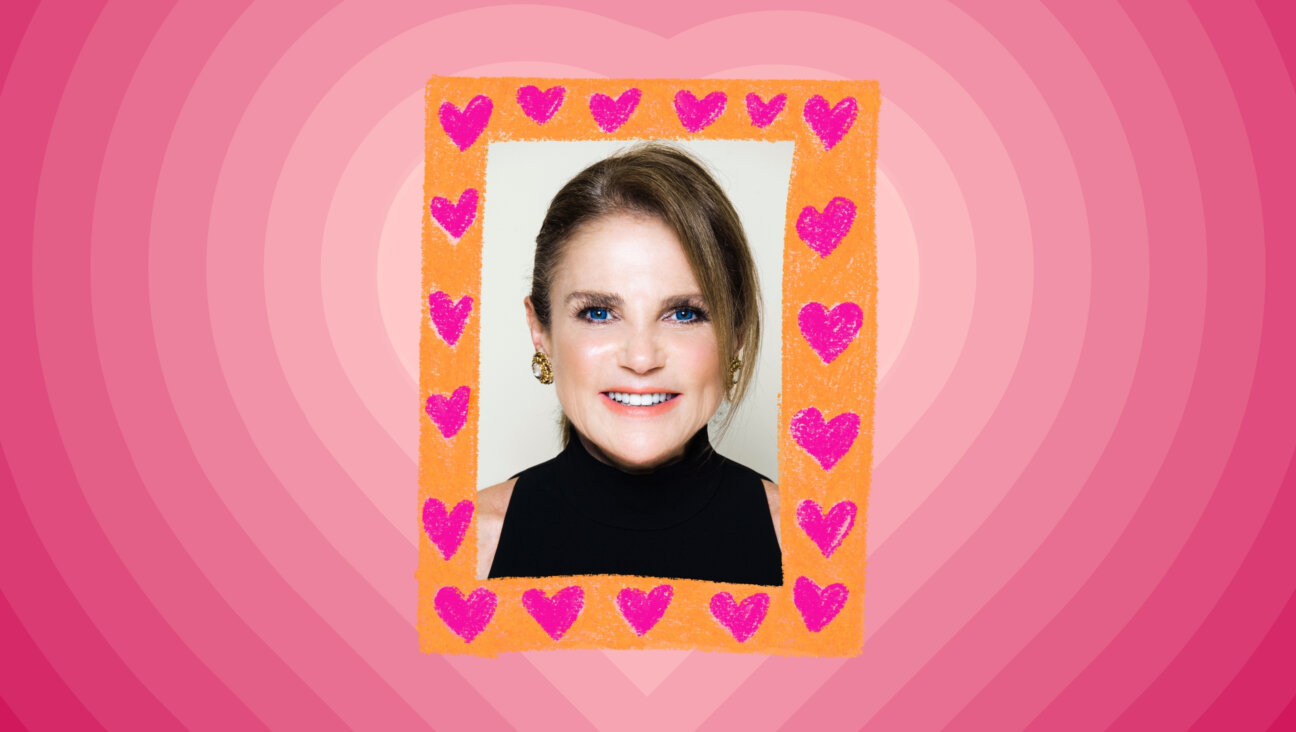Laughing in the Face of Evil
Joseph Skibell’s third novel “A Curable Romantic” evokes the spirit of “Candide” with a Jewish postmodern twist in order to ask the same question as Voltaire: How can we be optimistic in the face of evil? Voltaire wrote “Candide” to revolt against Gottfried Leibniz’s philosophy of optimism after experiencing the suffering of the Seven Years’ War and the 1755 Lisbon earthquake; Skibell writes his novel to respond to the horror of the Holocaust, in which many of his own relatives perished. The question becomes: How is it possible to hope after the horror of the Holocaust?
For such a serious metaphysical question, much of the novel is surprisingly laugh-out-loud humorous, with a “Zelig”-like hero, Dr. Sammelsohn, whose life becomes fantastically intertwined with three charismatic father figures who spearhead a series of movements: first, Sigmund Freud; then, Dr. Ludovic Lazarus Zamenhof (creator of the language Esperanto), and, finally, Kalonymus Kalman Shapira, rebbe of the Warsaw Ghetto. Sammelsohn starts the novel as a Jewish Candide, a good-hearted schlemiel embodying unbridled, persistent and unwarranted optimism, seeking love at every turn. But irony soon pervades the novel as the reader, unlike happy windmill-tilting Sammelsohn, knows the fate of Esperanto and of Shapira, who was murdered in the Holocaust.
The novel starts in 1895, when the 21-year old Sammelsohn, an ophthalmologist living in Vienna, attends the opera and falls in love with Emma Eckstein, Freud’s well-known case study. He thus meets Freud just before the publication of “Studies on Hysteria” makes him famous. When we first see Sammelsohn, he has cut off his forelocks to shed any traces of the shtetl past he fled to escape a forced marriage to the village idiot, Ita. Yet despite Sammelsohn’s purposeful donning of “appurtenances” —“the little mustache and goatee I wore in an effort to appear not more masculine, but less feminine; my unruly hair, worn in the Bohemian style; the little trinkets and fobs dangling from my vest…” — Freud immediately guesses the very shtetl of Sammelsohn’s birth. Sammelsohn’s childhood, his Jewishness, is not so easily discarded.
The figure of the dybbuk, which originated in the Hasidic lore of the shtetl, reappears throughout the book as Ita occupies different bodies, chasing Sammelsohn through the centuries. Trapped between the spiritual and the material world, never at rest, the dybbuk is a metaphor for every post-Diaspora wandering Jew. As Sammelsohn reflects:
It’s a peculiarity of us Jews that we tend to drag our history along behind us, clattering and clanking like tin cans tied to the tail of a frightened dog, and the more we attempt to outrun it, the louder and more frightening it becomes. Still, it’s nearly impossible for me to describe the shame of being haunted by a dybbuk at the dawn of the twentieth century, as though I were nothing but a benighted Ostjude!
Despite the impossibility of a Jew forsaking his past, Freud tries to resist the influence of his own shtetl roots. When he and Sammelsohn are alone in a hospital room, Freud resists believing that Eckstein has actually been possessed by the dybbuk of lovelorn Ita. Freud insists that what is possessing Eckstein is not the dybbuk but her hysteria, and that the two angels who appear are merely symptoms of his own exhaustion or cocaine use. Yet when the dybbuk predicts the date of his daughter Sophie’s premature death, he is chastened and he hangs a mezuza on Eckstein’s door. Freud proceeds to publish a paper he thinks will be revolutionary, stating his new theory that the origins of hysteria lay not in “early sexual traumas,” as he had until then maintained, but in “dybbuk seductions.” Yet his colleagues denounce him, and under their pressure he recants his belief in dybbuks, declaring that God was merely a “symptom of our child-like longing for a father.”
This is the key choice men must make in the novel — between selecting a life of mysticism or one of realism, of dreamily envisioning a world better than this one or of realistically turning one’s back on what could be and only seeing what is: the faults of man and not the potential. Freud gives in to his colleagues and denies his deeply rooted belief in God and Jewish mysticism, thereby securing the success of his theories and their adoption by the wider world. Zamenhof, we will see, makes the opposite choice, refusing to forsake his belief in God and identification with Judaism, thereby dooming the universal adoption of Esperanto.
Sammelsohn immediately finds a kindred spirit in Zamenhof and tries to help him spread his dream of one language creating one universal brotherhood. Alluding to the last line of “Candide,” an overly optimistic Sammelsohn imagines that
Esperanto will be endorsed by the committee as the international language. Little by little, the entire world will begin speaking it…. The dark world of separation and exile — known only too well to me from my childhood in Sziboyta — will disappear, and… men will begin recognizing one another as brothers….
Unfortunately, the French turn on Zamenhof, who resists pressure to take Jewish mysticism out of his writings, and reforms are enacted, stripping Esperanto of its mystical qualities.
Things only go from bad to worse. Sammelsohn and the reader are thrown into the stark reality of the Warsaw Ghetto, from which Skibell relieves us in a darkly comic passage in which Sammelsohn, along with Shapira, climbs a staircase leading to heaven. Yet Sammelsohn, now a middle-aged man, does not give up hope. The novel maintains a tension between, on the one hand, the dreamers, the mystics and utopian luftmenschen, and, on the other, the Jews who choose realism over mysticism and thereby achieve wealth and success — like Freud, Sammelsohn’s father and Herr Bernfeld, Sammelsohn’s father-in-law. At one point, Bernfeld, a businessman who thinks Sammelsohn unworthy of his daughter, says he sees people for what they are. He can profit from their inevitable “warring ways,” and with that money he can “build schools, fund hospitals, endow laboratories, plant a few trees… while fools like [Sammelsohn] go rushing off to greet the Messiah.” In another moment, Sammelsohn questions whether Zamenhof’s dream to “refashion the world” is doomed.
How many dictionaries, how many grammars, how many vocabulary lists would it take before the world was reconsecrated in all its pristine glory? Or, I shuddered to think, was my father right to turn his back on the world, seeing it for what it was: irredeemably violent, venal, base?
Skibell suggests the answer is no. He has a special place in his kishkes for the Jewish dreamer: the Romantics, who, like Zamenhof and Shapira, envision a better world and refuse to be “cured” of their beliefs. In the novel, Shapira is fervently working on a book while trapped in the Warsaw Ghetto. He refuses to escape with Sammelsohn, reminding him, “And also, don’t forget, I’ve got a book to finish,” and revealing that he plans to bury the book in a milk can. He asks Sammelsohn to “dig it up and see that it’s published” after the war, if he doesn’t survive. An angel, one of two that play a pivotal role at the end of the book, promises to do so. Indeed, Shapira’s influential book, “Esh Kodesh,” was actually published in the 1960s after a construction worker found it hidden in a canister. The presence of this self-referential book-within-a-book testifies that writing, like this magnificent novel itself, can be the greatest weapon against nihilism — that a lone visionary dreamer, with faith in his beliefs, can, by bravely committing words to paper, create something beautiful and immortal in the face of tremendous evil.
Laura Hodes is a writer and lawyer.
Click here for additional articles about the 2011 Sami Rohr Prize.
A message from our Publisher & CEO Rachel Fishman Feddersen

I hope you appreciated this article. Before you go, I’d like to ask you to please support the Forward’s award-winning, nonprofit journalism so that we can be prepared for whatever news 2025 brings.
At a time when other newsrooms are closing or cutting back, the Forward has removed its paywall and invested additional resources to report on the ground from Israel and around the U.S. on the impact of the war, rising antisemitism and polarized discourse.
Readers like you make it all possible. Support our work by becoming a Forward Member and connect with our journalism and your community.
— Rachel Fishman Feddersen, Publisher and CEO























